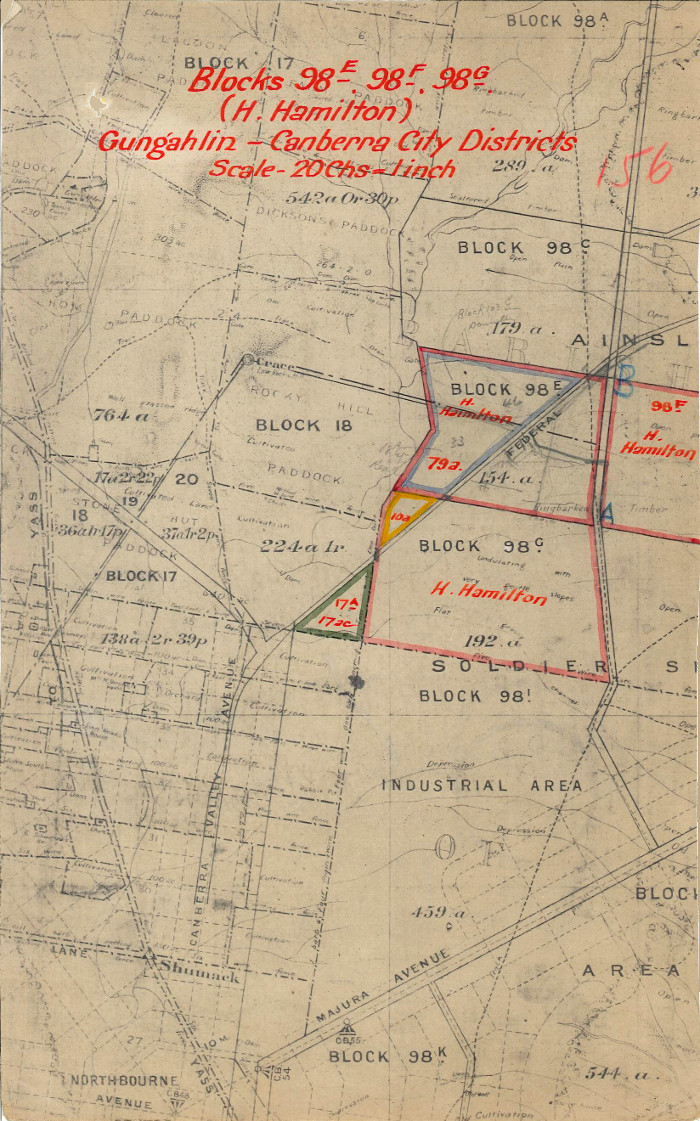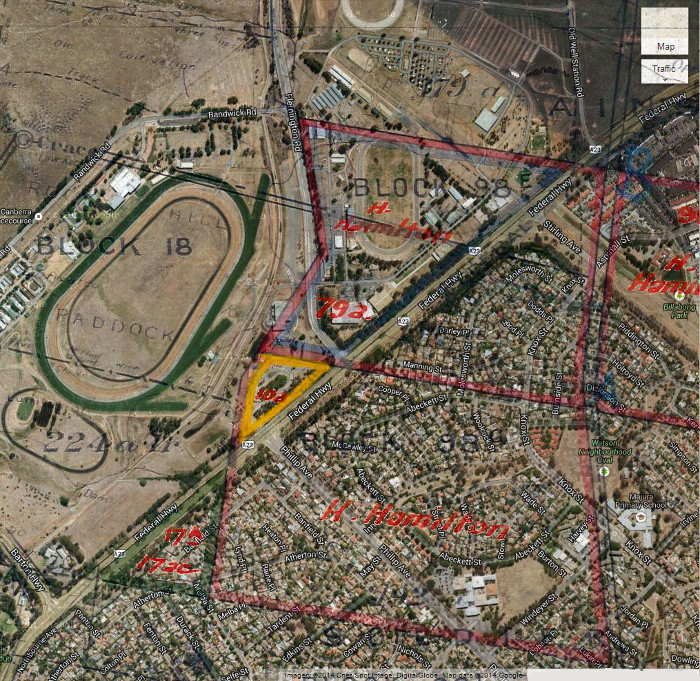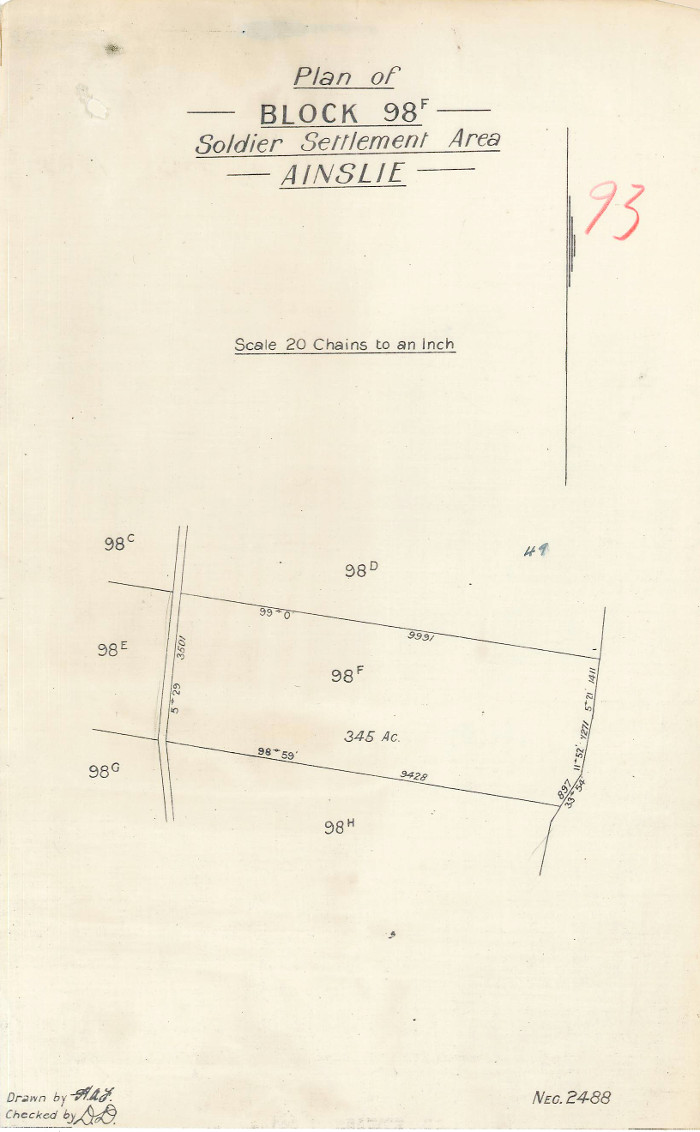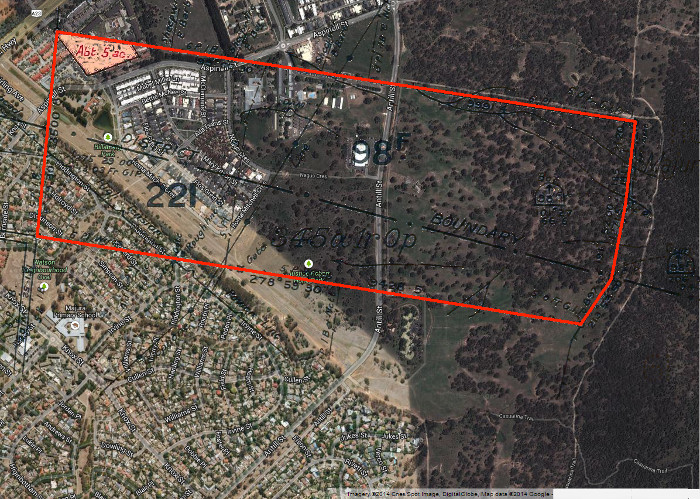Leo Ewan Cameron
Blocks 98E, 98F, 98G & 98H Gungahlin District
Gungahlin Blocks 98G & 98H
Leo Ewan Cameron belonged to the Cameron family from Weetangerra. He was born in 1897 in Murrumburrah near Harden, NSW and enlisted in Coonabarabran, NSW in June 1917, claiming to be 21 years of age. His father, like his grandfather, was a school teacher and although he did not object to his son enlisting, believed that Leo was "being sent away in great haste before he has been properly tested. As a child he was very delicate. I don't think he is very strong."
Less than two months after enlistment, Cameron embarked with reinforcements for the 35th Battalion arriving in France in February 1918. During March 1918 the Germans launched their last major offensive of the war and quickly forced the British into retreat. The 9th Brigade of the AIF (which included the 35th Battalion) was rushed to the defence of the village of Villers-Bretonneux where, on 4th April 1918, they successfully halted the German advance towards Amiens. During the battle, Cameron was shot in the thigh and evacuated to England for treatment. He rejoined his unit in August 1918 as the AIF advanced up the Somme valley but he developed a septic knee which ended his active role in the war. Cameron returned home and was discharged on 28th March 1919.
Later that year the first soldier settlement blocks became available in the Ainslie-Majura Subdivision. This subdivision covered land north from Dickson towards Mitchell. Cameron was successful in obtaining Gungahlin Blocks 98G and 98H, with both leases being for twelve years commencing on 1st January 1920. The annual rent on the lease for the 192 acres (78 hectares) of Gungahlin Block 98G was £48 and for the 307 acres (124 hectares) of Gungahlin Block 98H the rent was £76/15.

Plan of Gungahlin Block 98G.

Plan of Gungahlin Block 98H.
Cameron's blocks were, like those of his neighbours, plagued by rabbits and the Commonwealth regularly sent in their dogman to destroy the burrows. The Commonwealth also cleared weeds overrunning his blocks in October 1924. Cameron was warned that next time he would be asked to show cause as to why his leases should not be terminated. From then on Cameron appeared to keep pests under control.
By 1927 he was living on the property which he called Banavie, named after the village in the Scottish Highlands from where his great grandparents had migrated in 1838. When the leases expired in October 1927, Cameron sought to swap his land for Kowen Block 9, then leased by Jack Donnelly.

Google Maps image of area c2013 with Gungahlin Blocks 98G & 98H boundary in red.
Approval was given for Cameron to occupy Kowen Block 9 from 1st February 1928. Gungahlin Blocks 98G and 98H were allocated to a local man, Hector Hamilton, on a quarterly basis from April 1928 although Cameron made arrangements to farm the land with Hamilton in the short term. In January 1929 he agreed to accept £260/10 from the Commonwealth for his tenant's rights in the house and fencing at Banavie.
Hamilton continued to farm Gungahlin Blocks 98G and 98H until they were resumed for the development of Watson in the 1950s. Hamilton and his family remained in the cottage until it was demolished in the 1960s to make way for suburban homes.

Plan of cottage on Gungahlin Block 98H.
Gungahlin Blocks 98E & 98F
Gungahlin Block 98E of 154 acres (62 hectares) and Gungahlin Block 98F of 345 acres (140 hectares) were originally allocated to Harry Murray under the Soldier Settlement Scheme with effect from 1st January 1920. Murray struggled to make a living from the blocks and on 28th October 1922 transferred the land to his neighbour, Leo Cameron. This gave Cameron a total area of 998 acres (404 hectares). He also purchased Murray's 770 sheep and then applied for a five year lease on the blocks.

Plan of Gungahlin Blocks 98E, 98F and 98G.

Google Maps image of area c2013 with Gungahlin Blocks 98E and 98G boundaries in red.

Plan of Gungahlin Block 98F.

Google Maps image of area c2013 with Gungahlin Block 98F boundary in red.
Cameron married Viney Keating in 1936 and they farmed in the Young district of NSW where they raised their six children. He died aged 86, at Royal Canberra Hospital on 7th August 1984.
Sources
- ArchivesACT: Government Property & Tenancy Registers - Gunaghlin Block 98G (
 PDF 365Kb) & Gungahlin Block 98H (
PDF 365Kb) & Gungahlin Block 98H ( PDF 344Kb)
PDF 344Kb) - ArchivesACT: Rate Book : Territory for the Seat of Government - 1927 (
 PDF 17.8Mb) - 1928 (
PDF 17.8Mb) - 1928 ( PDF 18.7Mb) - 1929 (
PDF 18.7Mb) - 1929 ( PDF 8.88Mb)
PDF 8.88Mb) - ArchivesACT: TL7793 - Block 98G & H Gungahlin - H. Hamilton
- ArchivesACT: TL7794 (Part 1) - Block 98F Gungahlin - H.I. Hamilton
- ArchivesACT: TL7794 (Part 2) - Block 98F Gungahlin - (Includes Approval Drive-In Theatre Site 1955) - Hector Ian Hamiton
- NAA: (B2455) First Australian Imperial Force Personnel Dossiers, 1914-1920: http://discoveringanzacs.naa.gov.au/browse/person/111189
- 'Deaths' - The Canberra Time, 8th August 1984, p.29: http://nla.gov.au/nla.news-article127218568
- Information provided by Dr Barry Price
